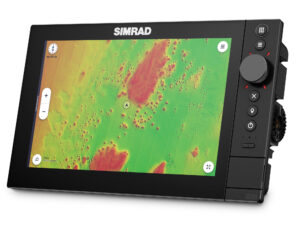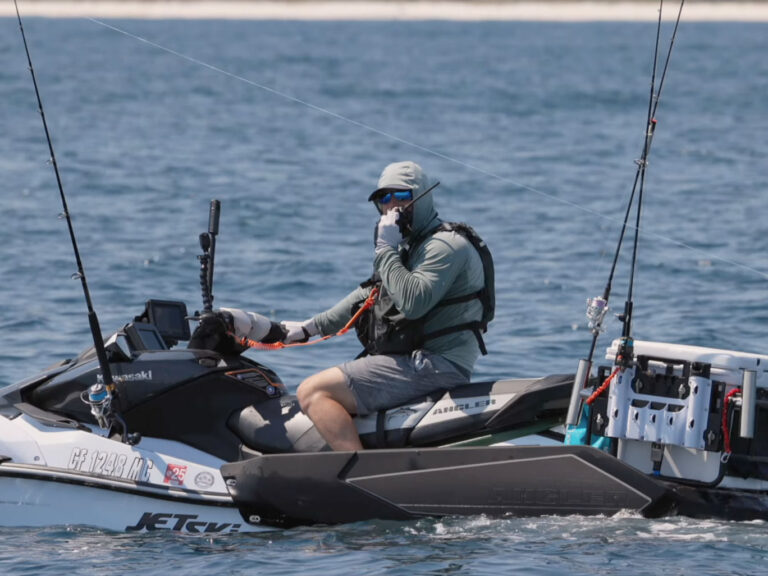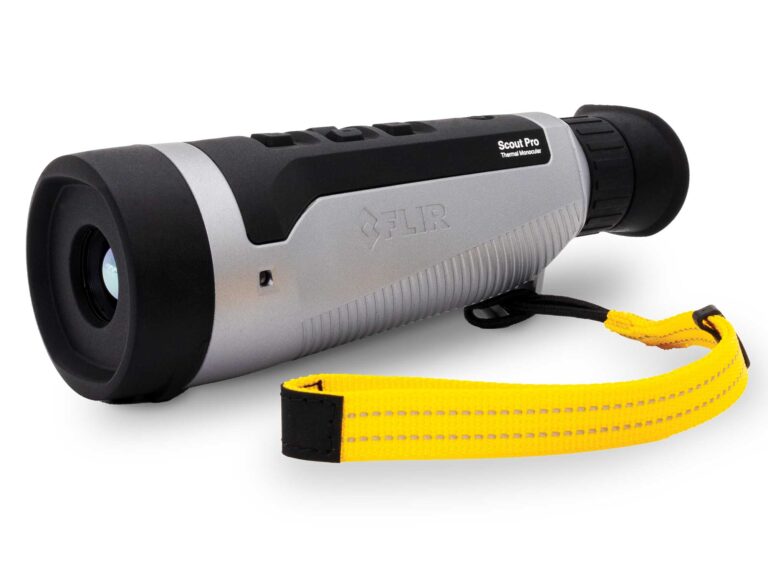
A battery monitor is like a gas gauge, showing you how much electrical power is left (known as state of charge) as well as other vital signs. Today adding a monitor to a boat battery is easier than ever, thanks to systems from brands such as Balmar, Blue Sea Systems, Mastervolt, Veratron, Victron and Xantrex.
While most have helm gauges or displays, some feature the ability to use a mobile device instead. The Victron SmartShunt system, for example, uses Bluetooth to link wirelessly to your phone or tablet with the VictronConnect app.
While the SmartShunt can also be hard-wired to a Victron GX touchscreen, the app option minimizes wire runs, connections and new holes in the dash. It also frees up space on small dashes.
The SmartShunt can be installed and configured to monitor multiple batteries, but we focus on a single house battery for this installation. The SmartShunt is available in 500-, 1,000- and 2,000-amp loads. Select a size that exceeds your boat battery’s overall maximum amperage for input and output. We used the 500-amp model for this project. The SmartShunt works with all types of batteries, including flooded-cell and AGM lead-acid versions and lithium iron phosphate.
Before starting the installation, remove metal jewelry, such as rings, bracelets and watches, because these can produce short circuits that melt metal and cause burns. Be careful with metal tools, which can do the same. Wear eye and clothing protection to guard against acid burns, and avoid smoking, open flames and sparks in the vicinity of a battery.
Skill Level: 2 of 5
Finish Time: Approx. 2 hours
Tools and Supplies
- Victron Energy Blue Power IP65 SmartShunt Battery Monitor 500A/50mV ($157.95; hodgesmarine.com)
- Stainless-steel fasteners to mount the SmartShunt
- Power drill or drill-bit set
- Screwdrivers and wrench set
- High-amperage marine fuse or circuit breaker
- Positive and negative marine battery cables and eye connectors
- Eye and clothing protection

The SmartShunt sports an IP65 waterproof rating, but still mount it in a fairly dry area on board your boat. Choose a mounting location as close to the battery as possible. Use the 5.5 mm holes in the base to screw or through-bolt the SmartShunt to a vertical or horizontal hard surface. The 500- and 1,000-amp models have two mounting holes, while the 2,000-amp model has four. Mounting screws are not included. Choose the appropriate-size stainless-steel hardware to securely install the SmartShunt sensor.

Connect the negative battery terminal to the M10 bolt on the “battery minus” side of the SmartShunt using a black (to denote negative) marine-grade battery cable in the appropriate AWG size for the amperage load for your boat’s battery system. Securely tighten all cable bolts and nuts. Note that there should be no other connections on this side of the shunt or on the negative battery terminal. Any loads or chargers connected here will be excluded from the battery’s state-of-charge calculation.

Use a black marine-grade electrical cable to connect the negative terminal of your boat’s DC onboard electrical system to the M10 bolt on the “load minus” side of the SmartShunt sensor. Again, ensure that the cable size doesn’t exceed the maximum amperage load for your boat’s battery system. Securely tighten all cable bolts and nuts. Make sure that the negative of all DC loads of items such as inverters, battery chargers, solar chargers and other charge sources are connected after the shunt.

Use a red battery cable and fuse or breaker to connect the positive battery terminal to the boat’s DC electrical system. Make sure the cable size matches the amperage load for your boat’s battery system and that the fuse or breaker offers the appropriate amperage rating for the battery’s electrical load. Connect the VBatt+ red wire with the inline fuse from the SmartShunt to the battery’s positive terminal. Tighten all cable bolts and nuts. The monitor is now powered and ready to configure (see next step).
Read Next: More Weekend Workbook Projects

Download the VictronConnect app on your mobile device. Open the app and connect via Bluetooth to the SmartShunt. Look for the battery monitor to appear in the device list in the “local” or “VRM” tab. Click on the battery monitor and enter the default PIN code: 000000. The app will ask you to change the PIN code for security. Use the app to configure settings, such as the battery capacity, amp load, alarm thresholds and more. For more details, scan the QR code on the sensor.









